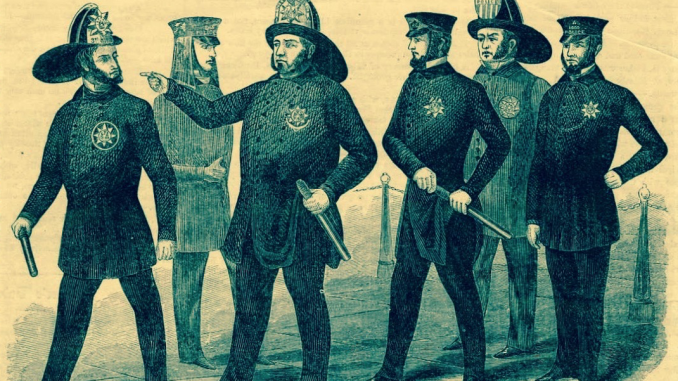
![]()
A question from a fan regarding uniforms and equipment worn and used by police officers in the City of New York was received. The answer to this question will shed light on the famous, and widely reproduced, image of the “first uniforms” adopted by NYC for the police force as illustrated in “Gleason’s Pictorial.”
Q: I read an article written in 2015 by someone who put it up in a Facebook group. It was about the helmet, caps, etc. worn through time by NYC cops. Under the picture of the 1854 uniforms he wrote “Gleeson’s Proposed Municipal Police Uniforms 1854.” I’ve seen this picture before and I always thought the uniforms in the picture were actually used but there was nothing mentioned further in the article about them at all other than the picture.
I was wondering if you could answer my question. Were the fireman helmets worn by the cops or not? Do you have an opinion on this or any information on it?
A: In researching your question, I can unequivocally state that the fire style helmets in “Gleason’s Pictorial,” published on January 7, 1854, were in fact adopted as part of the official uniform, and worn by the city’s police officers in the period of the illustration.
Overcropped images of Gleason’s illustration have removed the words “New Regulation Uniform of the New York Police” which appeared beneath the illustration, as well as the correct name of the publication, “Gleason’s Pictorial Drawing-Room Companion,” which appeared above the illustration. The words “New Regulation”… beneath the illustration infer that they were adopted and not proposed. As a matter of fact, paragraph one of the article accompanying the illustration reads “We give herewith a view of the new uniform of the police of New York, which has just been adopted, and, as we think, very properly.”
The information that follows comes from several primary sources of information published by the City of New York, The State of New York, Gleason’s Pictorial, the NYPD’s Magazine (SPR-3100) and an 1885 book written by Augustine Costello, entitled “Our Police Protectors. History of the New York Police from the Earliest Period to the Present Time.”

The Police Force’s Long-Standing Duties Relating to Fires:
In 1835 the city passed a law relating to the prevention and extinguishing of fires. The policemen at the time were part of the “Police Office” and one of their many duties was to respond to the scenes of fires, with their “staves” (long wooden poles with a pointed/sharp weapon affixed) and sashes (leather bands with official seal affixed). They were charged to report the cause & origin of fires to the Mayor, or other available city official.
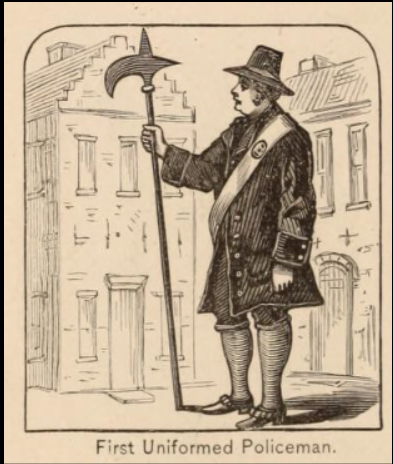
Source: Costello, “Our Police Protectors”
From the 1820s to circa 1843-4, the helmets worn by the “Watch Department” (Constables & Marshals) were made of a heavy leather and bore the word “POLICE” on the front. These helmets were shellacked twice a year and became heavy and hardened, which led to the moniker of “Leatherhead” for the officer’s wearing them. In addition to the helmet, the officers are reported to have worn a “white star” on their left breast. (Note: Only one source was located to date regarding the star.)
In March 2020, NYPDHistory was pleased to learn that a well-respected collector obtained what may be the only known example of a Watchman’s helmet. If it is in fact a Watchman’s helmet, it may be the oldest known piece of police equipment known to exist in any collection. While more research is needed, the following images certainly appear similar in design and construction to that of the collector, Daniel Sollitti’s, piece.
The NYPDHistory community of readers has come through in the past with additional information, or corrections on posts. If you have any information, would like to offer an opinion on the piece, or know of an older piece in a collection, please email Admin@NYPDHistory.com.
Below, 1830 illustration of a Leatherhead (Watchman) and his helmet. Source: 1830 Cries of New York
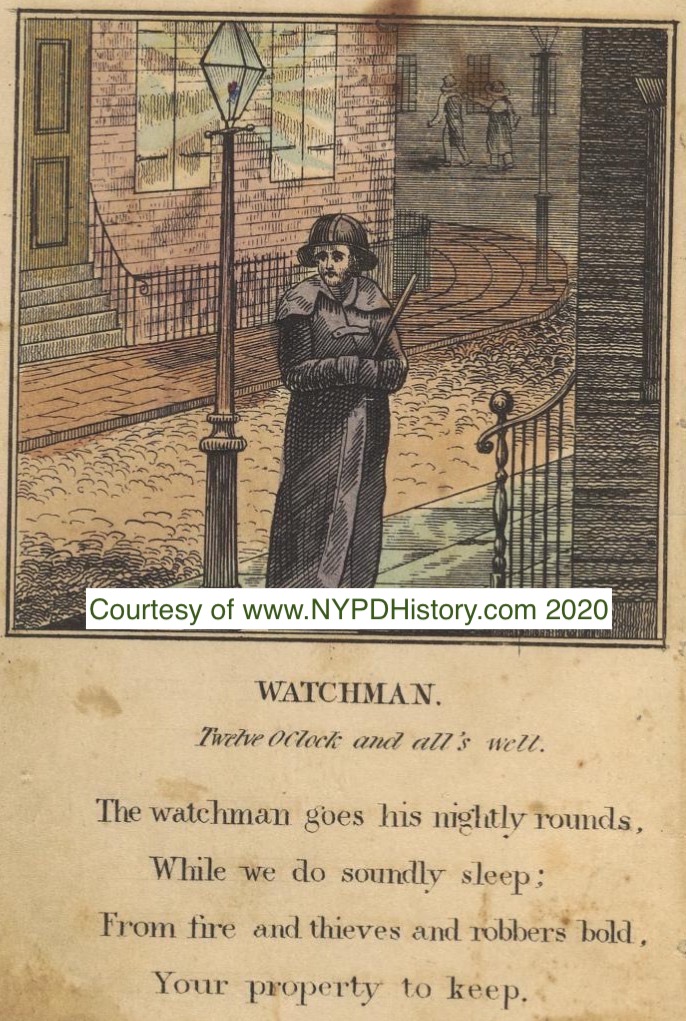
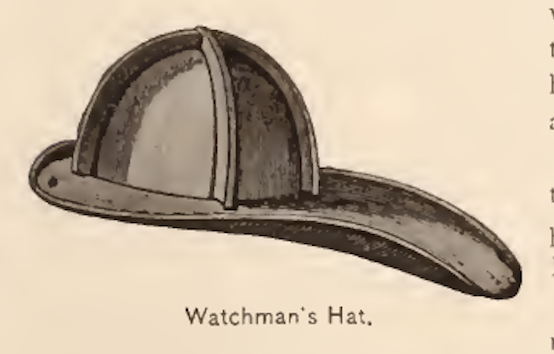
Below: The only known photograph of a Leatherhead helmet.
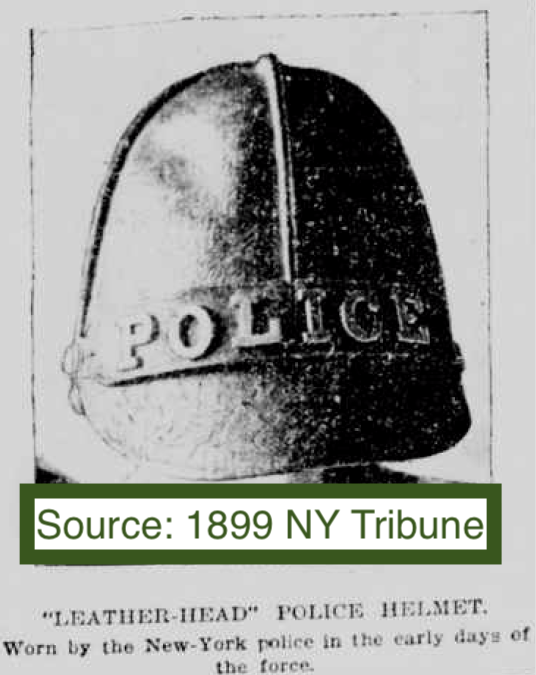
Below, from the Daniel Sollitti Collection ©2020 All Rights Reserved
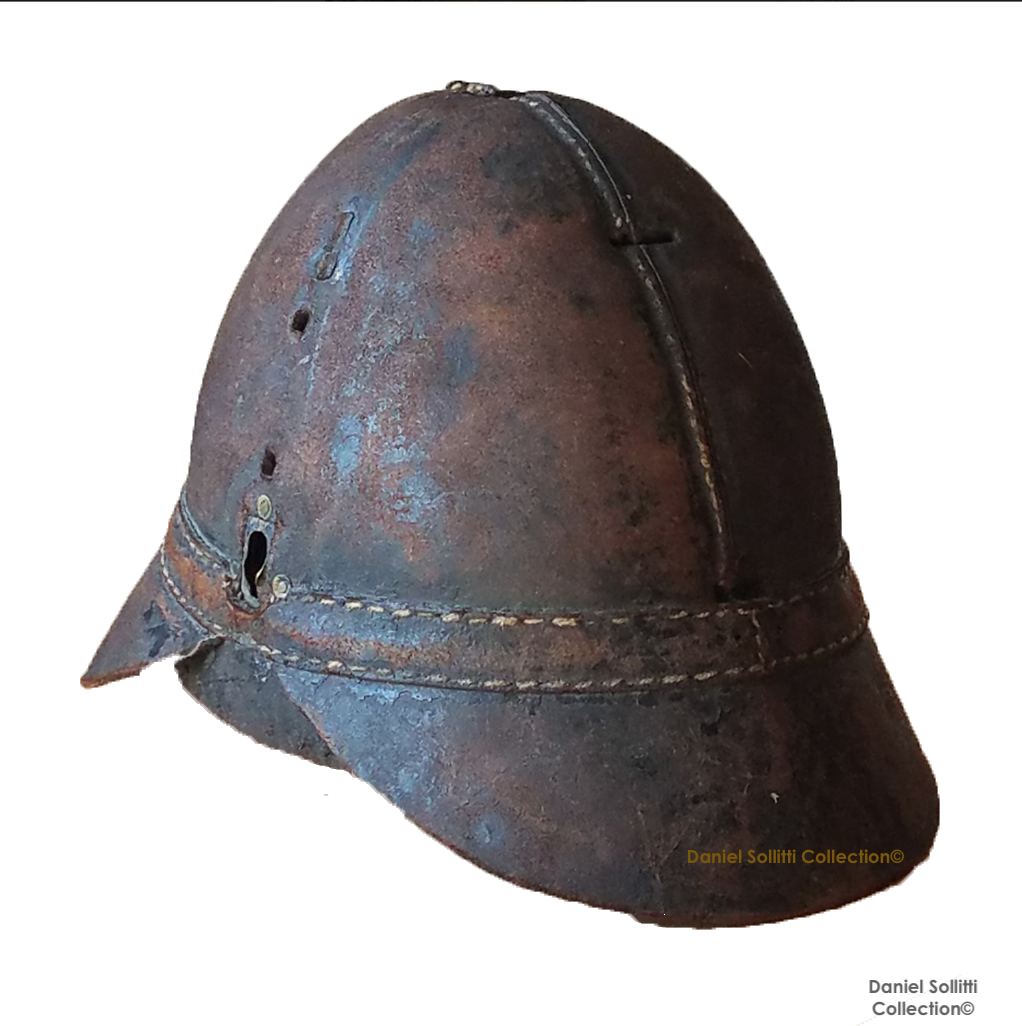
The Police Act:
In May of 1844, the State of New York passed an Act which established and regulated the Police of the City of New York. The Act was adopted by the NYC Common Council and became law, thus establishing a well regulated police force in the city. A “Day and Night Police” replaced the old “Watch Department” and the several titles in the then abolished “Police Office” were incorporated into the new entity. Two of the relevant titles in the new police force were “Fire Warden” and “Bell Ringer.”

The Bell Ringers would sit atop fire and bell towers and when a fire was detected, sound an alarm by ringing the bell and pointing towards the location of the fire scene. Using the method of triangulation, responding police and fire personnel could respond to the scene.
The Act called for half of off duty men to report to the scenes of riot and fires and established, for the first time, a “Patrol District” with a “Station House” manned by Captains of Police, First & Second Assistant Captains, Sergeants, and Policemen. This is the earliest record found of the use of the term “Station House” which remains in use to this day!
In 1846, the Act was amended and addressed the displeasure and inefficiencies relating to men employed by the police force as Bell Ringers. It was suggested that such men come from the body of volunteer firemen in the city.

In 1852, pursuant to another Amendment to the Act, the authority of the Chief of Police was increased and broadened to that of a Police Justice, when determining the cause & origin of fires.
In April 1853, the NYS Legislature again passed an Act creating a “Police Department” in the City of New York. Article 1, contained a clause that made it the responsibility of the Captains of Police, of the nearest Station House, to proceed forthwith with their Reserve Corps, or simply “Reserve” to the scene of fires, or riots, to preserve order and to investigate the cause & origin of fires.
The Reserve was a squad comprised of one Sergeant and four Patrolmen specially selected for their superior fitness and trustworthiness who possessed “superior qualifications to prevent crime and to detect and arrest offenders of the law.” Appointment to the Reserve was considered a promotion. There were twenty squads in the Reserve Corps. The Reserve was assigned to the courts, public meetings, ferries, raid depots, amusement parks, steamboat landings and locations with high crime rates. The Reserve was also called out to fires and riots.
In November 1853, regulations relating to the uniforms worn by police officers were issued and prescribed: uniform buttons, belts for batons, trousers and overcoats (winter) and lighter coats (summer) for the men. The regulations abolished the previous practice of permitting the Captains of each district to prescribe the uniforms for the men under their command as the practice led to confusion and lacked a uniformity of appearance. It was noted that the uniformity of the men, including a unique number worn to identify each man (so that they could not shirk from their duties and civilian complaints) was welcomed by the citizens and men, alike. The new regulation also called for the city to pay for most of the mandated equipment.
In a 1854 report relating to the unsanitary, unhealthy, and dangerous condition in his Station House, the Captain of Police of the Ninth District, Greenwich Street, detailed the deplorable condition of his station house, and the ill-effects of the same on the health, and attendance of his men. In doing so, he described a small room in the rear of the building where the men kept their equipment and hung their “fire caps” on a wall. This reference speaks to the fact that the helmets were hung, while not worn.
In 1857, the duty to provide a proper police force at every fire remained the charge of the men of the Metropolitan Police District.
In “Our Police Protectors,” Costello, on page 129, specifically mentioned the elusive fire-style helmets worn by the city’s police officers, writing “Cloth caps were furnished by the city, and a fire cap, similar to that worn by foremen to go to fires, riots, etc.” “Foremen” were the highest rank within the volunteer fire companies of the city in the period.
Costello also provides an image of Captain George W. Walling’s breast Shield, the style of which is depicted in Gleason’s 1854 illustration.
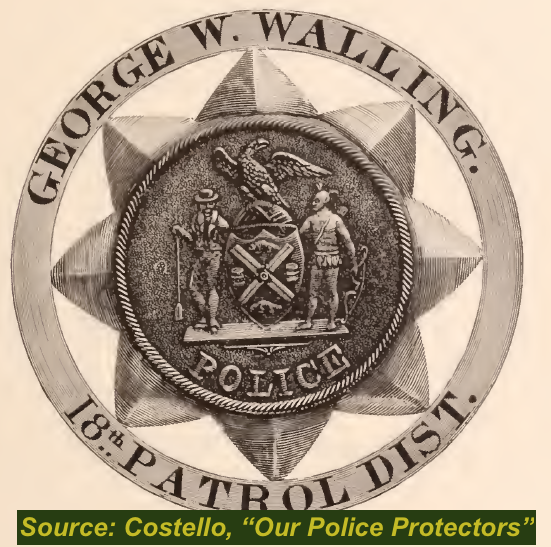
“What’s the Deal With:” Gleason’s 1854 Illustration of the Police Uniforms & Fire-Style Helmets? Ample sources, including the article that accompanied the illustration, provide proof positive that the fire-style helmet depicted was in fact worn by the police of New York City. We are happy to have answered the question.
Note: If anyone has additional, or conflicting information to that presented, the Author welcomes the same and, if required will edit & amend this brief article.
Updated: September 8, 2023 – added info on the Reserve Corps – Source 1853 Rules & Regs.
![]()
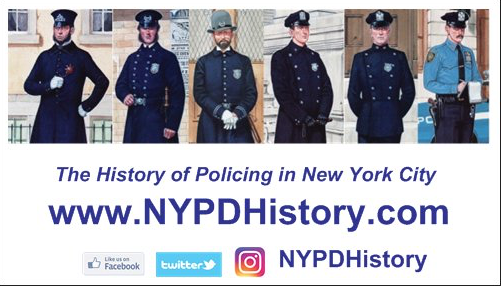

Leave a Reply
You must be logged in to post a comment.